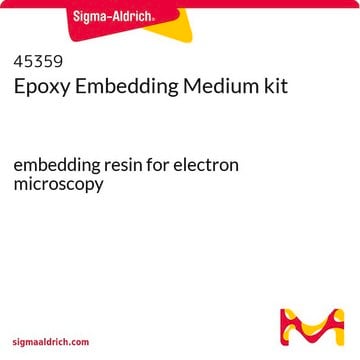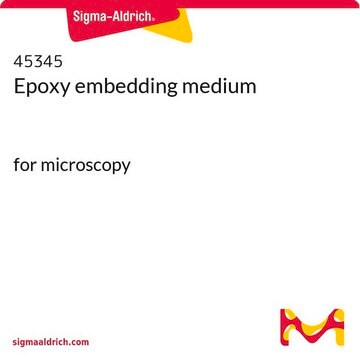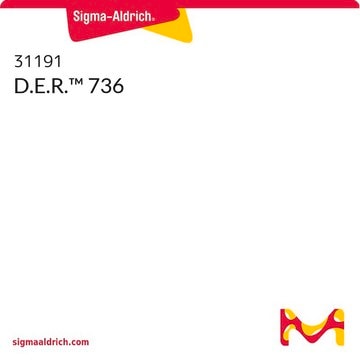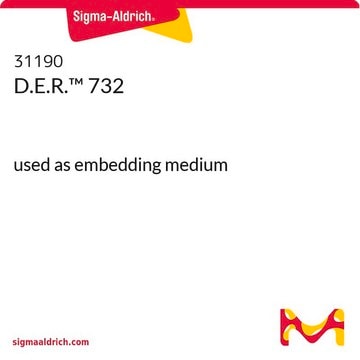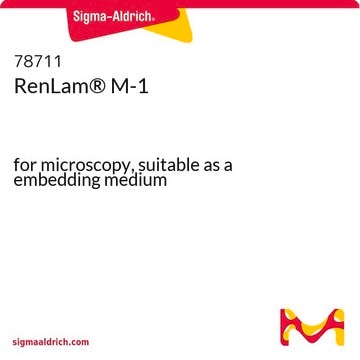EM0300
Spurr Low Viscosity Embedding Kit
hydrophobic resin for embedding histological samples
Synonyme(s) :
resin for specimen preparation
About This Item
Produits recommandés
Application(s)
hematology
histology
Température de stockage
room temp
Description générale
Application
Composants de kit seuls
- Nonenylsuccinic anhydride 450 g
- D.E.R. 736 250 g
- Dimethylaminoethanol 100 g
- ERL 4221 250 g
Mention d'avertissement
Danger
Mentions de danger
Classification des risques
Acute Tox. 3 Inhalation - Acute Tox. 4 Dermal - Acute Tox. 4 Oral - Eye Dam. 1 - Flam. Liq. 3 - Muta. 2 - Skin Corr. 1B - STOT SE 3
Organes cibles
Respiratory system
Code de la classe de stockage
3 - Flammable liquids
Point d'éclair (°F)
102.2 °F
Point d'éclair (°C)
39 °C
Certificats d'analyse (COA)
Recherchez un Certificats d'analyse (COA) en saisissant le numéro de lot du produit. Les numéros de lot figurent sur l'étiquette du produit après les mots "Lot" ou "Batch".
Déjà en possession de ce produit ?
Retrouvez la documentation relative aux produits que vous avez récemment achetés dans la Bibliothèque de documents.
Les clients ont également consulté
Notre équipe de scientifiques dispose d'une expérience dans tous les secteurs de la recherche, notamment en sciences de la vie, science des matériaux, synthèse chimique, chromatographie, analyse et dans de nombreux autres domaines..
Contacter notre Service technique